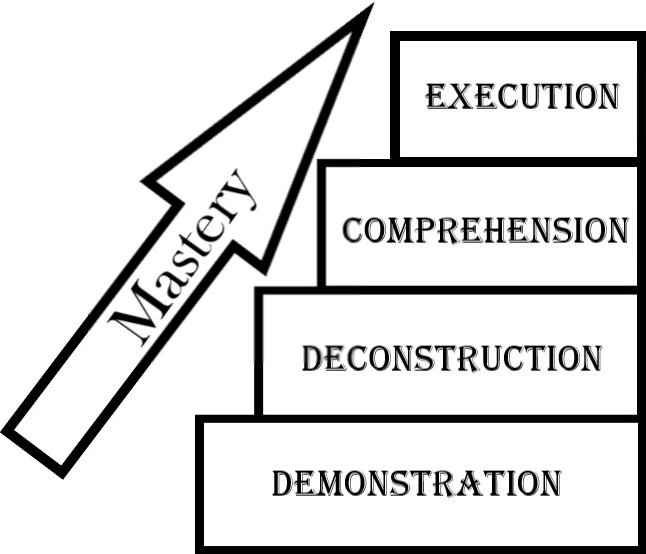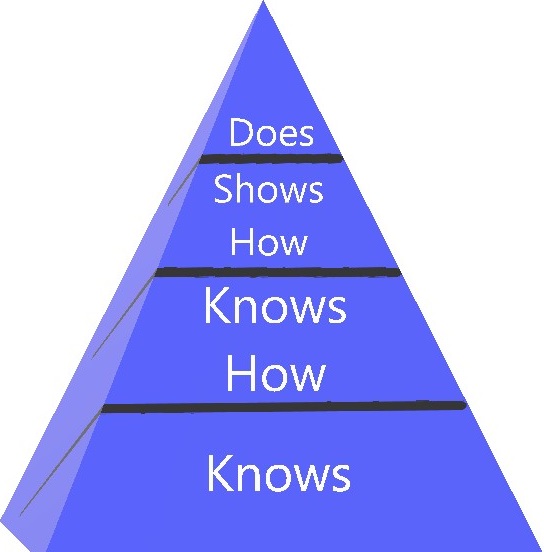[1]
McCoy CE, Menchine M, Anderson C, Kollen R, Langdorf MI, Lotfipour S. Prospective randomized crossover study of simulation vs. didactics for teaching medical students the assessment and management of critically ill patients. The Journal of emergency medicine. 2011 Apr:40(4):448-55. doi: 10.1016/j.jemermed.2010.02.026. Epub 2010 Apr 22
[PubMed PMID: 20417055]
Level 1 (high-level) evidence
[2]
Grenvik A, Schaefer J. From Resusci-Anne to Sim-Man: the evolution of simulators in medicine. Critical care medicine. 2004 Feb:32(2 Suppl):S56-7
[PubMed PMID: 15043230]
[3]
Yardley S, Teunissen PW, Dornan T. Experiential learning: transforming theory into practice. Medical teacher. 2012:34(2):161-4. doi: 10.3109/0142159X.2012.643264. Epub
[PubMed PMID: 22288996]
[4]
McGaghie WC, Issenberg SB, Cohen ER, Barsuk JH, Wayne DB. Does simulation-based medical education with deliberate practice yield better results than traditional clinical education? A meta-analytic comparative review of the evidence. Academic medicine : journal of the Association of American Medical Colleges. 2011 Jun:86(6):706-11. doi: 10.1097/ACM.0b013e318217e119. Epub
[PubMed PMID: 21512370]
Level 2 (mid-level) evidence
[5]
Britz V, Sterz J, Voß SH, Carstensen P, Germanyuk A, Ruesseler M. Influence of the Instructional Approach "Mastery Learning" versus "See One, Do One" on Acquiring Competencies in Abdomen Sonography: A Comparative Effectiveness Analysis. Ultrasound in medicine & biology. 2020 Aug:46(8):1934-1940. doi: 10.1016/j.ultrasmedbio.2020.04.001. Epub 2020 May 21
[PubMed PMID: 32446675]
Level 2 (mid-level) evidence
[6]
Krautter M, Dittrich R, Safi A, Krautter J, Maatouk I, Moeltner A, Herzog W, Nikendei C. Peyton's four-step approach: differential effects of single instructional steps on procedural and memory performance - a clarification study. Advances in medical education and practice. 2015:6():399-406. doi: 10.2147/AMEP.S81923. Epub 2015 May 27
[PubMed PMID: 26060417]
Level 3 (low-level) evidence
[7]
Krautter M, Weyrich P, Schultz JH, Buss SJ, Maatouk I, Jünger J, Nikendei C. Effects of Peyton's four-step approach on objective performance measures in technical skills training: a controlled trial. Teaching and learning in medicine. 2011 Jul-Sep:23(3):244-50. doi: 10.1080/10401334.2011.586917. Epub
[PubMed PMID: 21745059]
[8]
Ferrer M, Esquinas A, Leon M, Gonzalez G, Alarcon A, Torres A. Noninvasive ventilation in severe hypoxemic respiratory failure: a randomized clinical trial. American journal of respiratory and critical care medicine. 2003 Dec 15:168(12):1438-44
[PubMed PMID: 14500259]
Level 1 (high-level) evidence
[9]
Danion J, Breque C, Oriot D, Faure JP, Richer JP. SimLife® technology in surgical training - a dynamic simulation model. Journal of visceral surgery. 2020 Jun:157(3 Suppl 2):S117-S122. doi: 10.1016/j.jviscsurg.2020.02.013. Epub 2020 Apr 27
[PubMed PMID: 32354683]
[10]
Ramani S, Leinster S. AMEE Guide no. 34: Teaching in the clinical environment. Medical teacher. 2008:30(4):347-64. doi: 10.1080/01421590802061613. Epub
[PubMed PMID: 18569655]
[11]
Piryani RM, Shankar PR, Thapa TP, Karki BM, Kafle RK, Khakurel MP, Bhandary S. Introduction of structured physical examination skills to second year undergraduate medical students. F1000Research. 2013:2():16. doi: 10.12688/f1000research.2-16.v1. Epub 2013 Jan 16
[PubMed PMID: 24555027]
[12]
Lapkin S, Levett-Jones T. A cost-utility analysis of medium vs. high-fidelity human patient simulation manikins in nursing education. Journal of clinical nursing. 2011 Dec:20(23-24):3543-52. doi: 10.1111/j.1365-2702.2011.03843.x. Epub 2011 Sep 15
[PubMed PMID: 21917033]
[13]
Shah A. A Low-Cost, Reusable, Ballistic Gelatin Ultrasound Phantom for Simulation of Glenohumeral Intraarticular Injections. AEM education and training. 2018 Apr:2(2):169-173. doi: 10.1002/aet2.10081. Epub 2018 Feb 27
[PubMed PMID: 30051084]
[14]
Shefrin A, Khazei A, Cheng A. Realism of procedural task trainers in a pediatric emergency medicine procedures course. Canadian medical education journal. 2015:6(1):e68-73
[PubMed PMID: 26451232]
[15]
Alsaad AA, Davuluri S, Bhide VY, Lannen AM, Maniaci MJ. Assessing the performance and satisfaction of medical residents utilizing standardized patient versus mannequin-simulated training. Advances in medical education and practice. 2017:8():481-486. doi: 10.2147/AMEP.S134235. Epub 2017 Jul 18
[PubMed PMID: 28765717]
Level 3 (low-level) evidence
[16]
Ziv A, Wolpe PR, Small SD, Glick S. Simulation-based medical education: an ethical imperative. Simulation in healthcare : journal of the Society for Simulation in Healthcare. 2006 Winter:1(4):252-6. doi: 10.1097/01.SIH.0000242724.08501.63. Epub
[PubMed PMID: 19088599]
[17]
Dominguez M, DiCapua D, Leydon G, Loomis C, Longbrake EE, Schaefer SM, Becker KP, Detyniecki K, Gottschalk C, Salardini A, Encandela JA, Moeller JJ. A Neurology Clerkship Curriculum Using Video-Based Lectures and Just-in-Time Teaching (JiTT). MedEdPORTAL : the journal of teaching and learning resources. 2018 Mar 16:14():10691. doi: 10.15766/mep_2374-8265.10691. Epub 2018 Mar 16
[PubMed PMID: 30800891]
[19]
Augustin M. How to learn effectively in medical school: test yourself, learn actively, and repeat in intervals. The Yale journal of biology and medicine. 2014 Jun:87(2):207-12
[PubMed PMID: 24910566]
[20]
Morin CE, Hostetter JM, Jeudy J, Kim WG, McCabe JA, Merrow AC, Ropp AM, Shet NS, Sidhu AS, Kim JS. Spaced radiology: encouraging durable memory using spaced testing in pediatric radiology. Pediatric radiology. 2019 Jul:49(8):990-999. doi: 10.1007/s00247-019-04415-3. Epub 2019 May 16
[PubMed PMID: 31093725]
[21]
Kerfoot BP. Adaptive spaced education improves learning efficiency: a randomized controlled trial. The Journal of urology. 2010 Feb:183(2):678-81. doi: 10.1016/j.juro.2009.10.005. Epub
[PubMed PMID: 20022032]
Level 1 (high-level) evidence
[22]
Roussin CJ, Weinstock P. SimZones: An Organizational Innovation for Simulation Programs and Centers. Academic medicine : journal of the Association of American Medical Colleges. 2017 Aug:92(8):1114-1120. doi: 10.1097/ACM.0000000000001746. Epub
[PubMed PMID: 28562455]
[23]
Carlson K, Ashford A, Hegagi M, Vokoun C. Peer Coaching as a Faculty Development Tool: A Mixed Methods Evaluation. Journal of graduate medical education. 2020 Apr:12(2):168-175. doi: 10.4300/JGME-D-19-00250.1. Epub
[PubMed PMID: 32322350]
[24]
Parker MH, Newcomb AB, Liu C, Michetti CP. Chest Tube Management Practices by Trauma Surgeons. The Journal of surgical research. 2019 Dec:244():225-230. doi: 10.1016/j.jss.2019.06.032. Epub 2019 Jul 10
[PubMed PMID: 31301478]
[25]
O'Sullivan PS, Irby DM. Reframing research on faculty development. Academic medicine : journal of the Association of American Medical Colleges. 2011 Apr:86(4):421-8. doi: 10.1097/ACM.0b013e31820dc058. Epub
[PubMed PMID: 21346505]
[26]
Hepps JH, Yu CE, Calaman S. Simulation in Medical Education for the Hospitalist: Moving Beyond the Mock Code. Pediatric clinics of North America. 2019 Aug:66(4):855-866. doi: 10.1016/j.pcl.2019.03.014. Epub
[PubMed PMID: 31230627]
[27]
Hunt EA, Duval-Arnould JM, Nelson-McMillan KL, Bradshaw JH, Diener-West M, Perretta JS, Shilkofski NA. Pediatric resident resuscitation skills improve after "rapid cycle deliberate practice" training. Resuscitation. 2014 Jul:85(7):945-51. doi: 10.1016/j.resuscitation.2014.02.025. Epub 2014 Mar 4
[PubMed PMID: 24607871]


